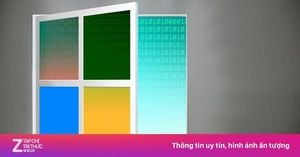The midrange phone market is no longer where tech companies quietly drop watered-down versions of their flagships—it’s now a full-blown battleground. With Google’s Pixel 9a and Apple’s newly introduced iPhone 16e going head-to-head, the lines between “affordable” and “premium” are blurrier than ever. Both phones promise flagship-level performance without the four-figure price tag, but they take very different approaches to get there. One leans into AI and clean Android simplicity, while the other brings Apple’s ecosystem polish and hardware consistency to a wider audience. So, which one actually delivers the better deal—and for whom? Let’s break it down.
The Pixel 9a is a sleek, premium-feeling phone measuring 6.1 x 2.9 x 0.4 inches and weighing 187g, slightly bulkier than the iPhone 16e. Its flat design and punch-hole front camera give it a modern look, while the small rear camera bump adds character. It comes in four colors (lavender, black, pink-ish, and white), offering more variety than the iPhone. It's IP68-rated and uses Gorilla Glass 3 for screen protection. The iPhone 16e, meanwhile, is more compact and lighter at 5.8 x 2.8 x 0.3 inches and 167g. It shares a similar flat design but has a more noticeable, dated notch. Its back is minimal with a single-lens camera. Available in only black and white, it still looks classic. It also has IP68 protection and a tougher Ceramic Shield screen. Winner: Pixel 9a. The Pixel 9a's variety of colors and slightly larger size give it an edge in terms of personalization and versatility.
The Pixel 9a features a 6.3-inch OLED display with a resolution of 2,424 × 1,080 and a refresh rate that scales from 60Hz to 120Hz. This makes scrolling and animations feel fluid, and with peak brightness reaching 2,700 nits, it stays clear even in direct sunlight. In comparison, the iPhone 16e has a slightly smaller 6.1-inch OLED screen with a sharper resolution of 2,532 × 1,170. However, it’s limited to a fixed 60Hz refresh rate, which feels less smooth by today’s standards. Its 1,200-nit peak brightness is solid but falls short of the Pixel’s visibility in bright conditions. Winner: Pixel 9a. The Pixel 9a's better low-light performance, cooler tones, and the added flexibility of an ultra-wide lens make it better.
The Pixel 9a features a 48MP main camera with OIS, a 13MP ultra-wide, and a 13MP front-facing camera. It delivers impressive results, nearly matching the Pixel 9 Pro despite the lower price. Photos look cooler in tone, with accurate skin tones and a more natural background blur in portrait shots. By contrast, the iPhone 16e sticks with a single 48MP rear camera and a 12MP selfie camera. It captures excellent and warmer images, which most people will love. However, it lacks an ultra-wide lens. Nonetheless, its rear camera and selfie camera can shoot videos in 4K and up to 60fps, while the Pixel 9a can only shoot up to 60fps with the rear camera. Winner: iPhone 16e. This is quite close, but I gave it to the iPhone 16e due to its superior video options.
The Pixel 9a runs on Google's Tensor G4 chip—the same processor found in the rest of the Pixel 9 lineup. Paired with 8GB of RAM, it handles multitasking well and delivers performance close to its pricier siblings. The G4 also shines in AI tasks, powering features like Google Gemini with ease, making the 9a a smart pick for users who value AI-driven tools like voice commands and image processing. Meanwhile, the iPhone 16e uses Apple’s A18 chip, also found in the standard iPhone 16. Though Apple doesn’t list RAM, third-party apps show it has 8 GB. In practice, it outpaces the Pixel 9a in raw speed and excels at high-performance tasks like gaming. Its chip is tightly integrated with the Apple ecosystem, which means smooth performance across apps and seamless interaction with other Apple devices. Winner: iPhone 16e. The iPhone 16e's A18 chip gives it an edge in terms of raw processing power.
Google packs an enormous 5,100mAh battery into the Pixel 9a, which the company claims will last more than 30 hours per charge. Nonetheless, the phone supports wired charging up to 23W USB-PD fast charging, and can go from 0% to 100% in about an hour and 30 minutes. The 9a also supports 7.5W wireless charging just like the iPhone 16e. Furthermore, Apple provided the 16e with a 4,005mAh battery and claims it has "the best battery life of any 6.1-inch iPhone". Furthermore, it can reach 50% in around 30 minutes and last almost a full day on a full charge. Winner: Pixel 9a. While Apple squeezes impressive life from a smaller battery, the Pixel’s larger capacity makes it the better choice for battery life overall.
The Pixel 9a ships with Android 15, offering deep customization and a flexible interface. Google promises seven years of OS updates, feature drops, and security patches—rare at this price. It also includes Google Gemini, a smart AI assistant that integrates tightly with Google services. As expected, the iPhone 16e runs iOS 18, known for its simplicity and smooth performance across Apple devices. While Apple doesn’t give exact support timelines, iPhones typically get updates for at least five years. Siri with Apple Intelligence serves as the built-in assistant—familiar, reliable, but not as advanced as Gemini in AI-driven tasks. Winner: Pixel 9a. Longer software support and smarter AI tools give it the edge.
After a thorough comparison, it's clear that both the Google Pixel 9a and the Apple iPhone 16e are excellent mid-range phones with their own unique strengths. At $499, the Pixel 9a delivers outstanding value with its vibrant 120Hz OLED display, versatile triple-camera setup, and advanced AI features powered by Google's Tensor G4. The iPhone 16e, priced at $599, counters with faster performance, a more compact build, and flawless integration across Apple’s ecosystem. Its battery life and ecosystem polish make it a natural fit for existing Apple users. Ultimately, the choice between these two phones depends on your specific needs and preferences. If you're all-in on Apple, the iPhone 16e is a strong pick—but for most, the Pixel 9a offers more for less.




